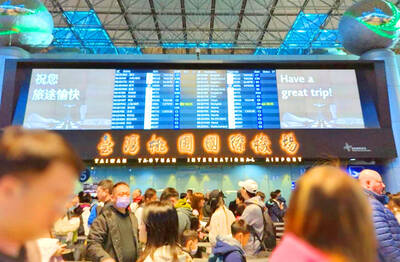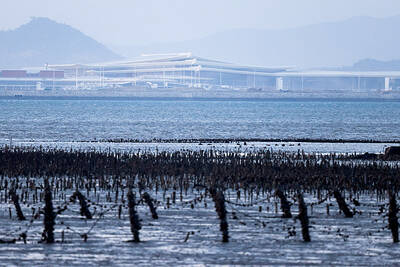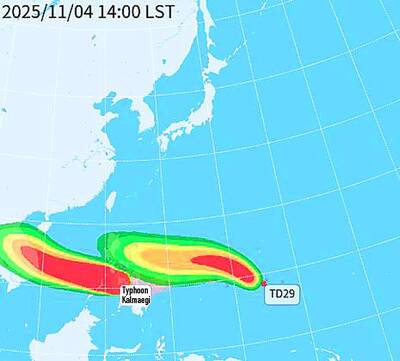The number of babies born in the nation during the first six months of the year reached 82,712, a decline of 8.9 percent compared to the same period last year, the Ministry of the Interior’s latest statistics released on Saturday showed.
The ministry attributed the drop to some people’s reluctance to have children born in the “Year of the Tiger,” in the 12-year cycle of animals on the Chinese zodiac.
However, the drop was smaller than the 16.7 percent year-on-year decline in the previous Year of the Tiger in 1998, the ministry said in a statement.
For the period from January to last month, there was a crude birth rate of only 3.58, the lowest level ever in Taiwan, the statistics showed. Crude birth rate is calculated based on the number of babies born per 1,000 people per year.
Taiwan had one of the world’s lowest birth rates with eight births per 1,000 people last year, far lower than the global average of 20 births per 1,000 people.
Last year, 191,310 babies were born in Taiwan, down nearly 4 percent from the previous year.
The latest ministry tallies show that Hsinchu City, the high-tech hub near Taipei, recorded the highest birth rate, 5.8 per 1,000, among all cities and counties in Taiwan, followed by 5.37 in Kinmen County and 5 in Hsinchu County.
More than 90 percent of newborn babies in the first six months of the year were born to local mothers, while 5 percent were born to mothers from China, Hong Kong and Macau and 3.9 percent to mothers from other countries, the statistics showed.
The government has launched many programs to boost the birth rate, including subsidies for families to hire nannies or have their babies attend day care centers, as well as subsidies for people who want to go on extended parental leave, the ministry said.

Three Taiwanese airlines have prohibited passengers from packing Bluetooth earbuds and their charger cases in checked luggage. EVA Air and Uni Air said that Bluetooth earbuds and charger cases are categorized as portable electronic devices, which should be switched off if they are placed in checked luggage based on international aviation safety regulations. They must not be in standby or sleep mode. However, as charging would continue when earbuds are placed in the charger cases, which would contravene international aviation regulations, their cases must be carried as hand luggage, they said. Tigerair Taiwan said that earbud charger cases are equipped

Foreign travelers entering Taiwan on a short layover via Taiwan Taoyuan International Airport are receiving NT$600 gift vouchers from yesterday, the Tourism Administration said, adding that it hopes the incentive would boost tourism consumption at the airport. The program, which allows travelers holding non-Taiwan passports who enter the country during a layover of up to 24 hours to claim a voucher, aims to promote attractions at the airport, the agency said in a statement on Friday. To participate, travelers must sign up on the campaign Web site, the agency said. They can then present their passport and boarding pass for their connecting international

UNILATERAL MOVES: Officials have raised concerns that Beijing could try to exert economic control over Kinmen in a key development plan next year The Civil Aviation Administration (CAA) yesterday said that China has so far failed to provide any information about a new airport expected to open next year that is less than 10km from a Taiwanese airport, raising flight safety concerns. Xiamen Xiangan International Airport is only about 3km at its closest point from the islands in Kinmen County — the scene of on-off fighting during the Cold War — and construction work can be seen and heard clearly from the Taiwan side. In a written statement sent to Reuters, the CAA said that airports close to each other need detailed advanced

WEATHER Typhoon forming: CWA A tropical depression is expected to form into a typhoon as early as today, the Central Weather Administration (CWA) said yesterday, adding that the storm’s path remains uncertain. Before the weekend, it would move toward the Philippines, the agency said. Some time around Monday next week, it might reach a turning point, either veering north toward waters east of Taiwan or continuing westward across the Philippines, the CWA said. Meanwhile, the eye of Typhoon Kalmaegi was 1,310km south-southeast of Oluanpi (鵝鑾鼻), Taiwan’s southernmost point, as of 2am yesterday, it said. The storm is forecast to move through central